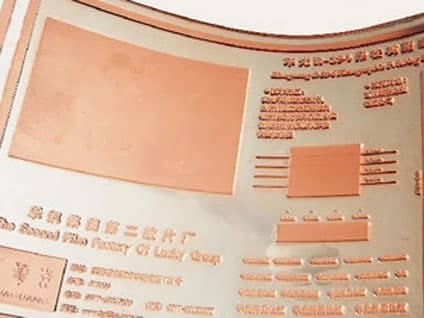Blog

Flexographic printing plate is a photosensitive rubber or resin printing plate, which is soft, bendable and elastic. Therefore, in the printing production process, due to its different characteristics, flexographic printing plate often has low printing durability, difficult plate making operation control, unstable quality, easy plate blocking, high plate making cost, low screen count and other phenomena, which trouble printing workers.
Flexographic printing can be used on a wide range of substrates, such as corrugated boxes, paper, films, etc. Flexographic printing is a printing method that does not require ink adjustment. Instead, an anilox roller that can provide a stable amount of ink is used to evenly apply a certain thickness of ink layer to the image part of the printing plate, and then the ink layer of the image part is transferred to the surface of the substrate under the pressure of the embossing roller to form a clear image.
Even if the quality of the printing plate is high, if the printing conditions and the printing plate are not properly managed at the printing site, it is difficult to obtain stable high-quality printed products. In fact, flexographic printing is not as difficult as imagined if the necessary daily management is mastered.
Proper storage of flexographic plates plays a vital role in achieving high-quality flexographic printing. Therefore, the following points should be noted during daily storage.
• Store in a place without sunlight and UV lamps;
• The ambient temperature should be controlled at 5℃~35℃;
• After printing, the ink on the surface of the plate should be cleaned as soon as possible and fully dried;
• The plates should not be stacked (paper or buffer materials should be used to separate the plates);
• The storage room should be well ventilated;
• Use a cleaning agent that will not swell the resin;
• If you are not sure about the characteristics of the cleaning agent, you can consult the plate suppliers;
Because the softness of flexographic plates is different from that of resin relief plates and offset plates, higher printing pressure or forceful rubbing of the plates can cause damage to the plates. Therefore, during and after printing, the plates should be cleaned to avoid damage. We know that water-based inks and solvent-based inks will dry and solidify after being left for a long time after printing. Once solidified, the ink is difficult to dissolve, and strong rubbing and cleaning will cause damage to the plates. Therefore, after printing, the plates should be cleaned and dried before the ink solidifies, and then placed in a well-ventilated place for storage. Avoid using strong solvents that swell the plates to remove the solidified ink and damage the plates. Appropriate plate washing time and storage environment can extend the service life of the printing plates and reduce the cost waste caused by re-plates.
Flexographic printing uses a "kiss-touch" printing pressure, which can produce high-quality printed products like gravure and offset printing. However, excessive printing pressure will darken the color of the printed products, wear the plate material and lead to re-plate making, resulting in unnecessary cost waste. In short, correctly understanding the characteristics of flexographic printing, using good quality management methods, and being familiar with the storage environment conditions of the printing plate can extend the use time of the plate material, give full play to the advantages of flexographic printing, and print high-quality printed products.
Latest News
Exhibition 2023 labelexpo Asia
Jun 14,2024
Flexo Printing Machine: the preferred method of packaging printing
Nov 06,2024
Aug 29,2024
GET A QUOTE